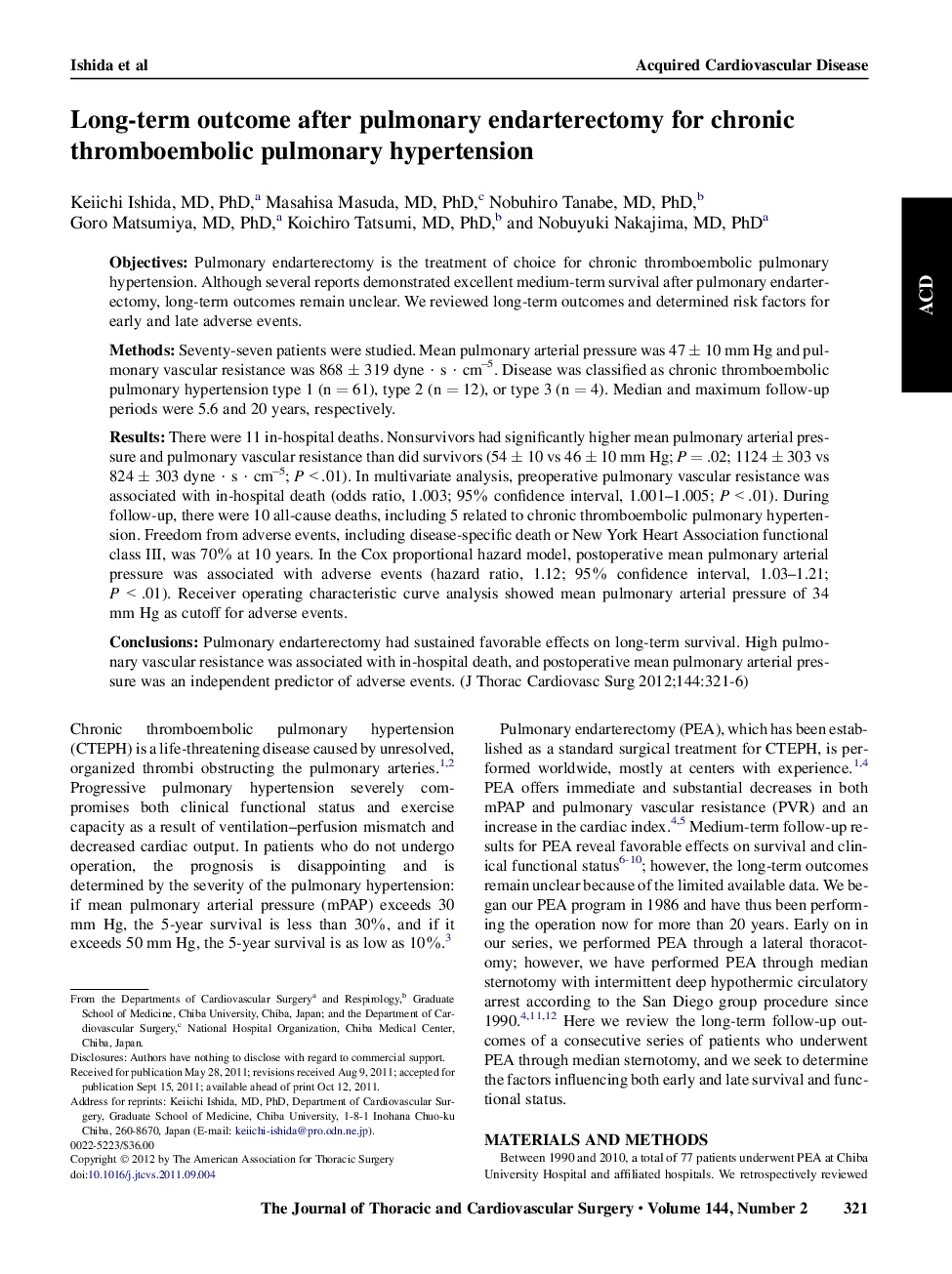| Article ID | Journal | Published Year | Pages | File Type |
|---|---|---|---|---|
| 2981684 | The Journal of Thoracic and Cardiovascular Surgery | 2012 | 6 Pages |
ObjectivesPulmonary endarterectomy is the treatment of choice for chronic thromboembolic pulmonary hypertension. Although several reports demonstrated excellent medium-term survival after pulmonary endarterectomy, long-term outcomes remain unclear. We reviewed long-term outcomes and determined risk factors for early and late adverse events.MethodsSeventy-seven patients were studied. Mean pulmonary arterial pressure was 47 ± 10 mm Hg and pulmonary vascular resistance was 868 ± 319 dyne · s · cm−5. Disease was classified as chronic thromboembolic pulmonary hypertension type 1 (n = 61), type 2 (n = 12), or type 3 (n = 4). Median and maximum follow-up periods were 5.6 and 20 years, respectively.ResultsThere were 11 in-hospital deaths. Nonsurvivors had significantly higher mean pulmonary arterial pressure and pulmonary vascular resistance than did survivors (54 ± 10 vs 46 ± 10 mm Hg; P = .02; 1124 ± 303 vs 824 ± 303 dyne · s · cm−5; P < .01). In multivariate analysis, preoperative pulmonary vascular resistance was associated with in-hospital death (odds ratio, 1.003; 95% confidence interval, 1.001–1.005; P < .01). During follow-up, there were 10 all-cause deaths, including 5 related to chronic thromboembolic pulmonary hypertension. Freedom from adverse events, including disease-specific death or New York Heart Association functional class III, was 70% at 10 years. In the Cox proportional hazard model, postoperative mean pulmonary arterial pressure was associated with adverse events (hazard ratio, 1.12; 95% confidence interval, 1.03–1.21; P < .01). Receiver operating characteristic curve analysis showed mean pulmonary arterial pressure of 34 mm Hg as cutoff for adverse events.ConclusionsPulmonary endarterectomy had sustained favorable effects on long-term survival. High pulmonary vascular resistance was associated with in-hospital death, and postoperative mean pulmonary arterial pressure was an independent predictor of adverse events.
